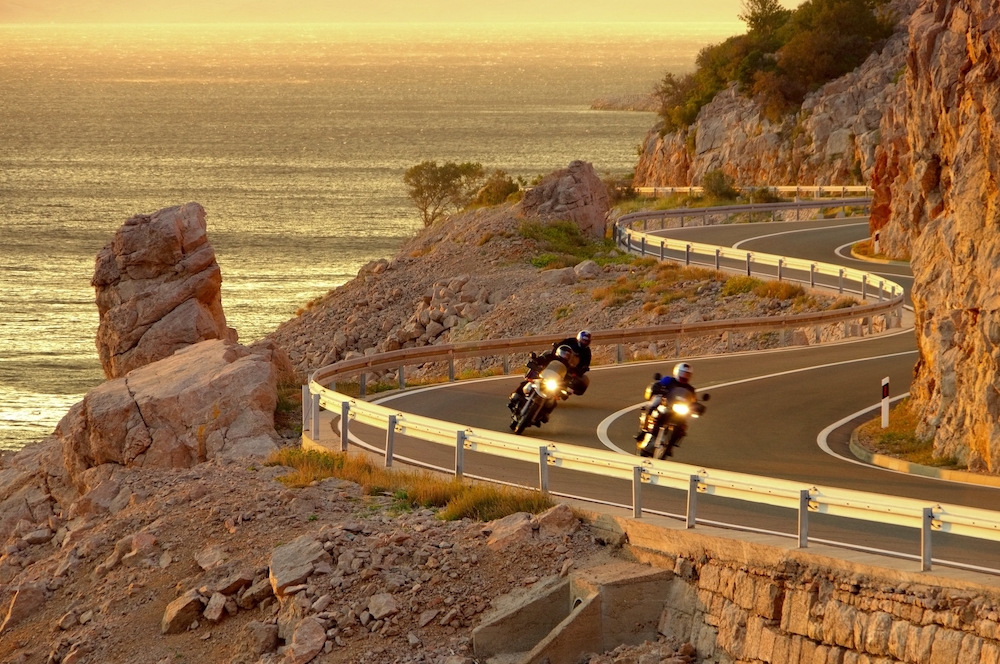We Make the Process Easy to Get the Results You Deserve
Never a Fee Unless We Win.
California’s Lane Splitting Laws and Injuries Involving Motorcycles
admin
January 25, 2021

In Southern California, motorcyclists often drive between cars in adjacent lanes in a practice known as “lane splitting.” When motorcycles engage in reckless lane splitting, crashes often ensue. However, lane splitting is not per se legal in California. Indeed, the California legislature has passed legislation permitting lane splitting. When a crash involving lane splitting occurs, the specific facts of the case will determine whether a motorcyclist or other vehicle is liable. This blog post examines California’s lane-splitting law and identifies the major lane splitting guidelines as established by the California Highway Patrol.
In 2016, then-Governor Jerry Brown signed Senate Bill 51 into law. Senate Bill 51 was codified as Vehicle Code section 21658.1 and defines lane splitting as:
Driving a motorcycle, as defined in Section 400, that has two wheels in contact with the ground, between rows of stopped or moving vehicles in the same lane, including on both divided and undivided streets, roads, or highways. (California Vehicle Code section 21658.1)
Section 500 of the Vehicle Code defines a motorcycle as a “motor vehicle having a seat or saddle for the use of the rider, designed to travel on not more than three wheels in contact with the ground. (California Vehicle Code section 400) Accordingly, non-electric peddle-based bicycles and four-wheel all-terrain vehicles (“ATV”) do not fall into the category of “motorcycles” and therefore are not specifically governed by the lane-splitting statute.
AB 51 went on to authorize the Department of the California Highway Patrol (“CHP”) to develop educational guidelines (“Guidelines”) related to lane splitting to ensure the safety of motorcyclists, drivers and passengers.
Indeed, the CHP established guidelines related to lane splitting. A full list of them can be found on the CHP website, https://www.chp.ca.gov/programs-services/programs/california-motorcyclist-safety. The Guidelines provide guidance for both motorcyclists and motorists as they relate to lane splitting. Specifically, the guidelines for motorists include: (1) avoid lane splitting next to large vehicles, (2) riding on shoulders is illegal and not considered lane splitting, (3) avoid remaining in a driver’s blind spot.
Alternatively, the Guidelines for motorists include: (1) Motorists should not take it upon themselves to not intentionally block or discourage motorcyclists from lane splitting; (2) Opening a vehicle door to impede a motorcycle is illegal; (3) drivers to the far-left lane should move to the left of the lane to give motorcycles ample room to pass.
Accordingly, if a motorcycle crash occurs when a motorcyclist is lane-splitting, the Courts will likely look to the guidelines to inform liability. For example, if a motorcyclist travels in a driver’s blind spot for too long and a crash ensues, it may suggest the motorcyclist is liable for the crash. On the other hand, if the crash is caused by a motorist who opens a door to impede a motorcycle, the motorist may be found to be at fault.
Unfortunately, motorcycle crashes are all too common in Southern California. Due to the beautiful year-round weather, many motorcyclists drive the roadways of Los Angeles, Orange County, San Diego and Ventura County every day. When a motorcycle crash occurs, injuries often ensue. Motorcycle crashes occurring involving lane splitting are no exceptions. If you or a loved one has been injured due to a crash involving a motorcycle, you should consult with an attorney to determine whether you are entitled to compensation for your injuries. The attorneys at MKP Law Group, LLP have years of experience representing motorcyclists, motorists and passengers in motorcycle-related crashes. Contact MKP Law Group, LLP for your free consultation today.
